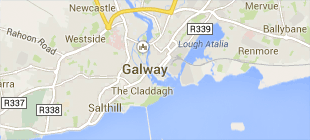-
Cúrsaí
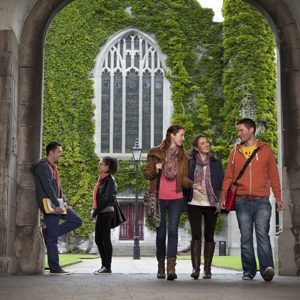
Cúrsaí
Tá roghnú cúrsa léinn ar cheann de na cinntí is tábhachtaí dá ndéanfaidh tú choíche! Féach na cúrsaí atá againn anseo agus an méid a deir mic léinn agus léachtóirí faoi na cúrsaí sin a bhfuil spéis agatsa iontu.
-
Saol na hOllscoile
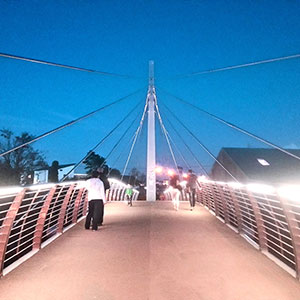
Saol na hOllscoile
Chuile bhliain roghnaíonn os cionn 4,000 duine Ollscoil na Gaillimhe mar chéad rogha. Faigh amach faoin saol in Ollscoil na Gaillimhe anseo.
-
Eolas Fúinn
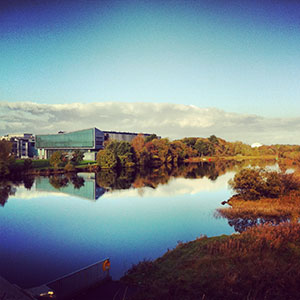
Eolas faoi Ollscoil na Gaillimhe
Bí ar an eolas faoin Ollscoil seo agus na fáthanna a bhfuil sí chomh speisialta sin – an stair thar a bheith spéisiúil a bhaineann leis an Ollscoil agus an nuacht is déanaí agus na hócáidí atá ar na bacáin.
-
Coláistí & Scoileanna
- Scoil na Tíreolaíochta, na Seandálaíochta agus Léann Éireannaigh
- Coláiste an Ghnó, an Bheartais Phoiblí & an Dlí
- Coláiste an Leighis, an Altranais & na nEolaíochtaí Sláinte
- Coláiste na hEolaíochta agus na hInnealtóireachta
- Scoil na dTeangacha, na Litríochtaí agus na gCultúr
- Roinn na Gaeilge
- An tAcadamh
- Stair
- Idirnáisiúnta
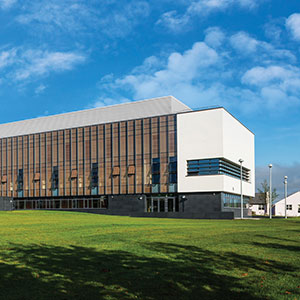
Coláistí & Scoileanna
Tá aitheantas idirnáisiúnta bainte amach ag Ollscoil na Gaillimhe mar ollscoil atá á treorú ag an taighde agus rún daingean aici teagasc den chéad scoth a chur ar fáil i réimsí éagsúla saineolais.
-
Taighde
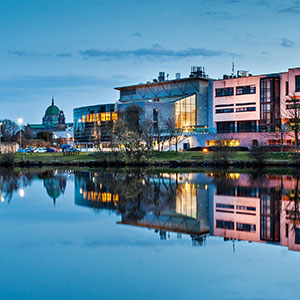
Nithe Fónta á gCruthú as Smaointe Úra
Tugann ár dtaighdeoirí aghaidh ar chuid de na dúshláin is práinní san 21ú Céad.
-
Gnó & Tionscal
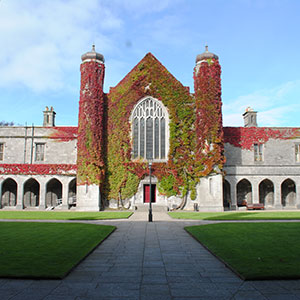
Tacaíocht do Thaighde Úrnua in Ollscoil na Gaillimhe
Déanaimid deiseanna tráchtála a chuardach agus a chothú don phobal taighde in Ollscoil na Gaillimhe, mar aon le comhpháirtíocht tionsclaíochta a chothú.
-
Alumni, Cairde & Lucht Tacaíochta
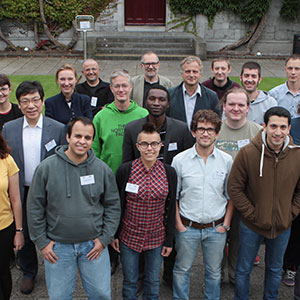
Alumni, Cairde & Lucht Tacaíochta
Tá os cionn 90,000 céimí de chuid Ollscoil na Gaillimhe ann ar fud an domhain. Déan nasc linn agus beidh teacht agat ar an gcomhphobal sin ar líne.
-
Rannpháirtíocht Pobail
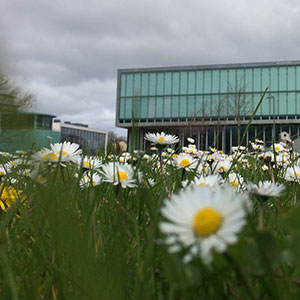
Rannpháirtíocht sa Phobal
In Ollscoil na Gaillimhe, creidimid go n-éireoidh níos fearr leat más féidir leat an méid a fhoghlaimíonn tú a chur i bhfeidhm i do shaol féin. Is mar gheall air sin go bhfuil béim mhór ar shocrúcháin oibre nó ar thionscadail phobail i gcuid mhór dár gcúrsaí.
Latest University News
30 April 2025
New research suggests passage tombs of Brú na Bóinne served as sophisticated solar observatories
New research by University of Galway suggests that the great passage tombs of the Brú na Bóinne World Heritage Site may have served as significant solar observatories - the backdrop to regional gatherings, religious festivals and monumental construction more than 5000 years ago.
The alignment of Newgrange to winter and summer solstice phenomena, Knowth to a ‘perceived’ autumnal equinox and Dowth to a winter solstice sunset, reveal a more complex so-called ‘cosmic calendar’ of Neolithic ritual events than had been previously recognised.
Further insight on the analysis can be read at The Brú na Bóinne Research Project - University of Galway
Built by Neolithic communities around 3,200 BC, the passage tomb at Newgrange is celebrated worldwide for the fact that its chamber, buried deep in the core of the mound, is illuminated annually by the rays of the rising sun at the winter solstice. It is ringed by 97 large kerbstones, some elaborately engraved with megalithic art.
Joe Fenwick, Archaeological Field Officer with the School of Geography, Archaeology and Irish Studies at University of Galway, has offered new insights into the carvings found on entrance stone to Newgrange and Kerbstone 52 at the rear of the structure, which effectively bookend the tomb alignment, marking the winter sunrise and summer sunset solstices respectively.
His analysis further suggests that these carvings are not merely decorative, but had specific meaning and significance in relation to the solar phenomena of the shortest and longest days of the year.
Mr Fenwick explains: “It is well known that the passage tomb at the heart of Newgrange is aligned to sunrise at the winter solstice. However, the spiral artwork on the kerbstones mark both the winter solstice and the summer solstice. It would also suggest that Newgrange probably had annual gatherings to mark both the winter and summer solstices.”
The new analysis and observations of the megalithic art on the entrance stone to Newgrange have revealed a novel interpretation of its meaning and significance.
A vertical line at the centre of the stone marks the alignment of the tomb to the winter solstice.
The spirals to the left of the line wind clockwise inwards towards their centre, representing the shortening journeys of the sun across the sky, from the height of summer to the shortest day at the winter solstice.
The spirals to the right of this line, however, spiral clockwise outwards from the centre and so represent the lengthening of the solar journeys across the sky from the shorter winter days towards the summer solstice.
Mr Fenwick continued: “In short, it is an abstracted representation of the annular solar cycle centred on the winter solstice. This is the first time that the artwork has been interpreted in this way, and it changes how we view Newgrange and the people who built it. Newgrange could be thought of as a sophisticated solar observatory, as well as a cathedral for worship and ritual.”
These findings are presented in a chapter entitled "Unravelling the Spiral: Passage Tomb Alignment, Related Kerbstone Art, and Cycles of Monumental Construction at Brú na Bóinne", featured in the recently published book People, Prehistory, and the Past: Essays in Honour of John Waddell, (Four Courts Press, 2025).
The book is dedicated to Professor Waddell, the Emeritus Professor of Archaeology at University of Galway, and a highly respected figure in Irish and international archaeology. It brings together contributions from colleagues with ties to the University’s Discipline of Archaeology.
Edited by Michelle Comber and Kieran O’Conor, the book includes a range of significant new research spanning subjects from prehistoric landscapes, decorative goldwork and artefact distributions to medieval lordships, ogham inscription, and the remarkable contribution of some pioneering female archaeologists.
The book was officially launched at Claregalway Castle by University of Galway Interim Deputy President and Registrar, Professor Becky Whay, earlier this month and a copy was also presented to the President of Ireland, Michael D. Higgins, at Áras an Uachtaráin (see: News, Events, Social Media & Spring Lunchtime Lecture Series - University of Galway).
Ends
30 April 2025
University of Galway hosts STEAM workshops for young people
ReelLIFE SCIENCE showcase of Science, Technology, Engineering, Arts and Maths (STEAM) activities for Foróige
From digital storytelling to DNA, and from Lego robots to robot dogs, the next generation of scientists, engineers and filmmakers have taken part in University of Galway’s ReelLIFE SCIENCE STEAM Showcase 2025.
More than 120 young science enthusiasts from 12 Foróige youth services in Galway, Mayo, Roscommon and Westmeath took part in workshops and activities delivered by Foróige youth workers and University of Galway students and staff.
The STEAM Showcase at the Institute for Lifecourse and Society was funded by the Research Ireland Discover Programme and is a joint initiative between the University of Galway ReelLIFE SCIENCE programme and Foróige’s GO Digital Youth Work Team.
Young people aged from 10 to 18 took part in workshops including music production, superhero digital storyboarding, stop-motion and green screen animation and the Cell EXPLORERS Fantastic DNA activity, while attendees also met ‘Scratch’, the School of Computer Science robot dog.
The event concluded with a ‘Media Mash-Up’, where participants showcased their STEAM activities via film, including Lego robotics, coding, engineering challenges and animation, alongside recent prizewinning Foróige entries to the ReelLIFE SCIENCE competition.
Megan Depinna, Senior Youth Officer at Foróige GO Digital said: “The ReelLIFE SCIENCE STEAM Showcase is a fantastic opportunity for young people involved in Foróige to explore their interests in science, technology, engineering, arts, and maths in a hands-on and creative way. It’s the perfect launchpad for creativity and discovery. We’re encouraging all young people to take their ideas further by entering the ReelLIFE SCIENCE competition, which is a unique platform for them to express their curiosity, creativity, and passion for science, and to have their voices heard on a national stage.”
Foróige’s Digital Youth Work Strategic Plan aims to ensure that all young people develop the key digital skills, values and competencies necessary to excel in the digital era by design and not simply by chance.
The University of Galway ReelLIFE SCIENCE programme challenges young people in schools and youth groups across the island of Ireland to engage with science and technology while developing the communication and digital skills so important for the 21st century.
The ReelLIFE SCIENCE programme is led by Dr Enda O’Connell, who said: “University of Galway is delighted to welcome young people from Foróige’s Youth Services, Youth Diversion Projects and Family Support Services on campus to learn new skills and explore the possibilities an interest in science and technology can bring. Partnerships like these are vital to broaden participation, increase the awareness of STEM careers and provide connections between STEM and the Creative Arts.”
Since 2013, more than 29,000 young people, supported by teachers and youth workers in 790 schools and youth groups, have taken part in the ReelLIFE SCIENCE video competition.
More information about this year’s competition, which closes for entries on October 10th, can be found at www.reellifescience.com
Ends
25 April 2025
Road Safety Reimagined initiative highlights ‘deadly consequences’ of distracted driving
More than 1,000 third-level students across Ireland, including students from University of Galway, engaged in a potentially lifesaving project as part of the Road Safety Reimagined initiative, highlighting the lifelong and potentially devastating impact of a moment’s distraction behind the wheel.
Research from the Road Safety Authority (RSA) in 2023 found that nearly one in 10 Irish drivers have been caught using their phones while driving.
In response, Road Safety Reimagined tasked students from University of Galway, University of Limerick, South East Technological University, Maynooth University and University College Cork to reimagine road safety through contemporary marketing concepts and develop solutions to positively impact driving behaviour.
The initiative was led by University of Limerick and An Garda Síochána, with Garda Commissioner Drew Harris presented awards for the top entries from each participating university as well as the winners of the overall prize and special categories.
The winning University of Galway entry centred on the tagline “SHOULD’VE stayed focused, WOULD’VE stayed safe, COULD’VE been avoided”, encouraging passengers to be a co-pilot and act responsibly to avoid distractions while travelling with a driver.
Bearing the striking tagline ‘Worst passenger? Your phone’, the overall winning concept by UL students highlights the dangers of using a phone while driving, taking a driver’s eyes, hands and focus away from the road.
Speaking at the event, Commissioner Drew Harris said: “Road Safety Reimagined provides a great opportunity for so many students to engage with such an important topic, and one which is so relevant to you all gathered here in this room.
“It opens up conversations around road safety and helps us to reach those who often struggle to connect with this key message. Too often we see tragedy on the roads, and so, anything we can do to prevent this from happening An Garda Síochána is glad to support.
“Engaging these talented young people in devising a marketing campaign around road safety which is aimed at their peers was a novel idea, and to see this initiative go from strength to strength is a credit to all those involved.
“This work provides us with such valuable insights and showcases the great many creative and innovative ways we can connect with those most at risk on our roads.”
Ends









